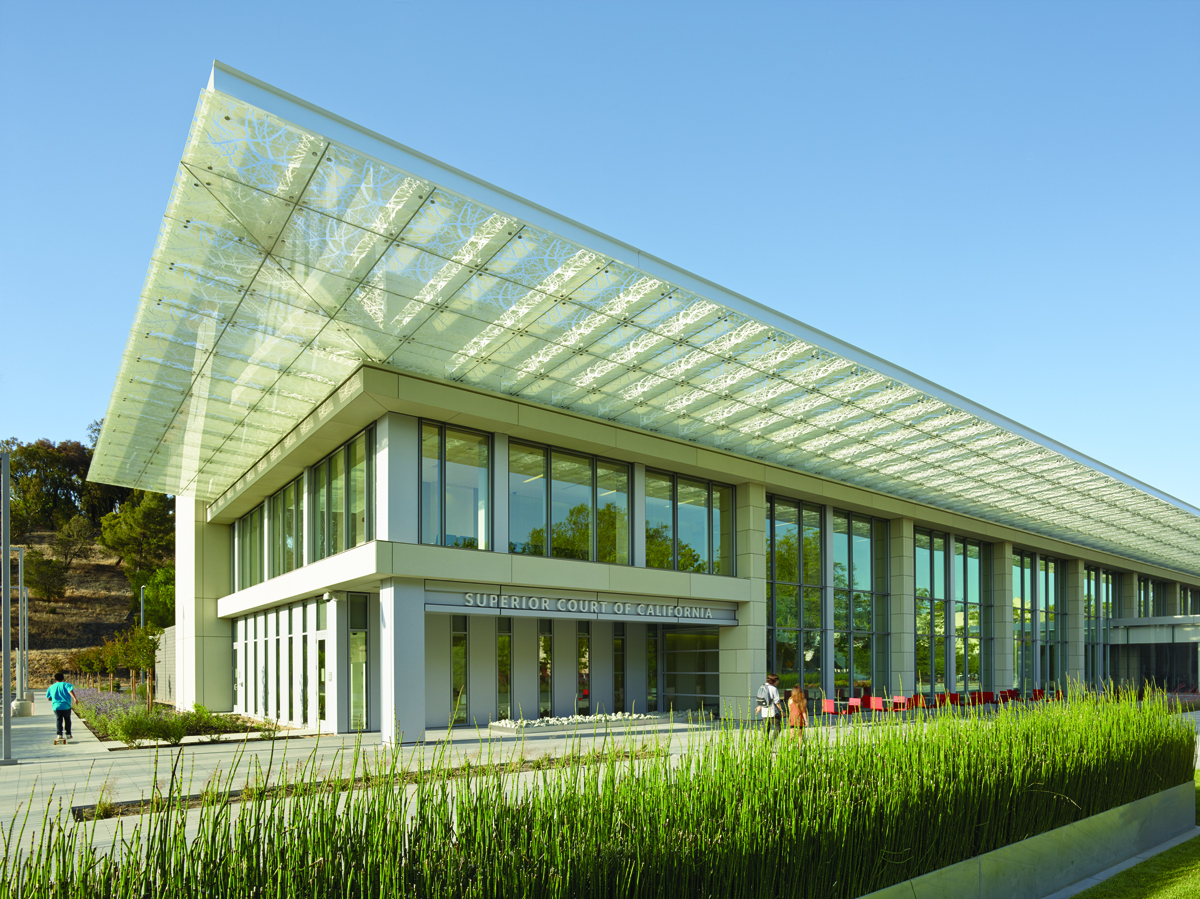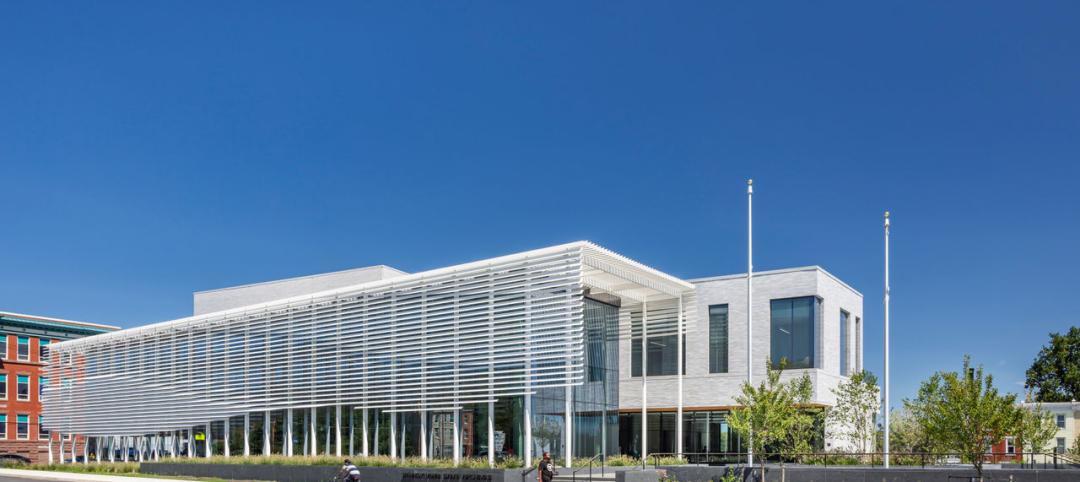It took six years, but in 2013, the Utah State Courts finally got the state legislature to approve a budget for the $34.2 million 2nd District Juvenile Courthouse, in Ogden. When it opens this May, the 85,000-sf, five-story building will include eight courtrooms, offices for judges and their 50-member staff, and space for juvenile probation services and the Weber County Sheriff’s security staff.
Projects like the Utah courthouse are luxuries for many states that, despite improving economies, are struggling to keep their heads above water.
Since the second half of 2013, state tax collections have fluctuated. They were down in the first half of 2014, then rebounded by 4.4% in the third quarter of 2014 over the same period a year earlier, according to the Rockefeller Institute of Government. The institute expects continued revenue growth in the coming quarters, but state tax collections have failed to keep pace with expenditures, especially as more states expand Medicaid coverage under the Affordable Care Act.
At least 16 states are facing serious budget shortfalls, according to the Washington Post. These include Louisiana, which is looking at a $1.6 billion deficit, which ballooned by $400 million as the price of oil—a huge source of state revenue—fell by 50%. Other states with impending deficits include Virginia ($2.4 billion), Pennsylvania ($1.8 billion), Kansas ($1 billion through FY 2016), Alabama ($950 million), and Maryland ($900 million).
The National Association of State Budget Officers (NASBO) notes that all states but Vermont either require their governors to submit or sign a balanced budget, or their legislatures to pass a balance budget. With tax increases mostly off the table, achieving balance means spending cuts. Recent data offer inconclusive clues as to the impact of those cuts on future state-funded construction and renovation work.
One snapshot—NASBO’s “State Expenditure Report 2012-2014”—projected a 5.5% increase, to $17.4 billion, in the states’ capital expenditures in fiscal 2014 for projects in an “all other” category that includes stadiums, public schools, and healthcare.
The Census Bureau’s broader estimates for public state and local construction put in place were less robust. Last year that number stood at $251.5 billion, up 2.2% from 2013, but still the second-lowest spending year since 2006.
Big-ticket categories were Roads and Bridges, Education, Transportation, and Sewage and Waste Disposal. Amusements and Recreation (which include sports stadiums) jumped 7.7% to $8.7 billion. Office construction was up 3.6% to $5.4 billion; Public Safety projects (jails, firehouses, etc.) fell by 7.9%, to $6.1 billion. Healthcare declined by 10.5%, to $6.3 billion.
Jan Frew, Deputy Administrator for Idaho’s Public Works division, reached out to several of her counterparts in the National Association of State Facilities Administrators on behalf of BD+C. Most of those contacted reported slight increases in tax revenues but only modest state-funded construction activities, she says.
Frew says that, since 2011, Idaho’s appropriations for public works have been “fairly steady,” at around $22.5 million per year. But while appropriations have recently spiked to $36 million, lawmakers aren’t confident that tax revenues will keep growing and are being cautious about adding to the state’s project funding base. Frew says the state is also reluctant to use bonds to fund projects.
Other states are looking for new ways to lower their construction costs. Illinois, Indiana, South Carolina, and West Virginia are among the states debating whether to repeal prevailing wage laws that apply to government-funded projects.
Newly elected Hawaii Governor David Ige, a Democrat, proclaimed that his state would actively seek more federal dollars to help fund state projects for housing, water, and transportation.
On the other hand, a can-do spirit is evident in Maine, where Governor Paul LePage, a Republican, recently unveiled a three-year, $2 billion, 1,900-project public works plan that, in 2015 alone, would include safety improvement projects at 76 locations, and $4 million for improvements at Portland’s International Marine Terminal.
In Michigan, the first stages of a new $88 million Welcome Center and park for the State Capitol have been initiated, even though the project’s funding mechanism isn’t in place. John Truscott, a spokesman for the Michigan State Capitol Commission, says the early work is being paid for through a $3 million allocation established last year for Capitol renovation and upkeep. The commission is seeking bond financing for the Welcome Center that would be repaid with tobacco taxes.
Related Stories
Giants 400 | Dec 20, 2023
Top 160 Apartment and Condominium Architecture Firms for 2023
Gensler, Humphreys and Partners, Solomon Cordwell Buenz, and AO top BD+C's ranking of the nation's largest apartment building and condominium architecture and architecture/engineering (AE) firms for 2023, as reported in Building Design+Construction's 2023 Giants 400 Report.
Giants 400 | Dec 20, 2023
Top 90 Student Housing Architecture Firms for 2023
Niles Bolton Associates, Solomon Cordwell Buenz, BKV Group, and Humphreys and Partners Architects top BD+C's ranking of the nation's largest student housing facility architecture and architecture/engineering (AE) firms for 2023, as reported in Building Design+Construction's 2023 Giants 400 Report.
Healthcare Facilities | Dec 19, 2023
A new hospital in Duluth, Minn., is now the region’s largest healthcare facility
In Duluth, Minn., the new St. Mary’s Medical Center, designed by EwingCole, is now the largest healthcare facility in the region. The hospital consolidates Essentia Health’s healthcare services under one roof. At about 1 million sf spanning two city blocks, St. Mary’s overlooks Lake Superior, providing views on almost every floor of the world’s largest freshwater lake.
Government Buildings | Dec 19, 2023
New Pennsylvania State Archives building holds documents dating back to 1680
Work was recently completed on a new Pennsylvania State Archives building in Harrisburg, Penn. The HGA-designed, 146,000-sf facility offers numerous amenities, including computers, scanners, printers, a kitchenette with seating, lockers, a meeting room, a classroom, an interactive video wall, gallery, and all-gender restrooms. The features are all intended to provide a welcoming and comfortable environment for visitors.
Urban Planning | Dec 18, 2023
The impacts of affordability, remote work, and personal safety on urban life
Data from Gensler's City Pulse Survey shows that although people are satisfied with their city's experience, it may not be enough.
MFPRO+ News | Dec 18, 2023
Berkeley, Calif., raises building height limits in downtown area
Facing a severe housing shortage, the City of Berkeley, Calif., increased the height limits on residential buildings to 12 stories in the area close to the University of California campus.
Green | Dec 18, 2023
Class B commercial properties gain more from LEED certification than Class A buildings
Class B office properties that are LEED certified command a greater relative benefit than LEED-certified Class A buildings, according to analysis from CBRE. The Class B LEED rent advantage over non-LEED is about three times larger than the premium earned by Class A LEED buildings.
Codes and Standards | Dec 18, 2023
ASHRAE releases guide on grid interactivity in the decarbonization process
A guide focusing on the critical role of grid interactivity in building decarbonization was recently published by ASHRAE. The Grid-Interactive Buildings for Decarbonization: Design and Operation Resource Guide provides information on maximizing carbon reduction through buildings’ interaction with the electric power grid.
Architects | Dec 18, 2023
Perkins&Will’s new PRECEDE tool provides access to public health data to inform design decisions
Perkins&Will recently launched a free digital resource that allows architects and designers to access key public health data to inform design decisions. The “Public Repository to Engage Community and Enhance Design Equity,” or PRECEDE, centralizes demographic, environmental, and health data from across the U.S. into a geospatial database.
Sports and Recreational Facilities | Dec 15, 2023
San Antonio Spurs’ new practice facility aims to help players win championships and maintain well-being
Designed by ZGF, the Victory Capital Performance Center uses biophilic design to promote better health and wellness on and off the court.

















